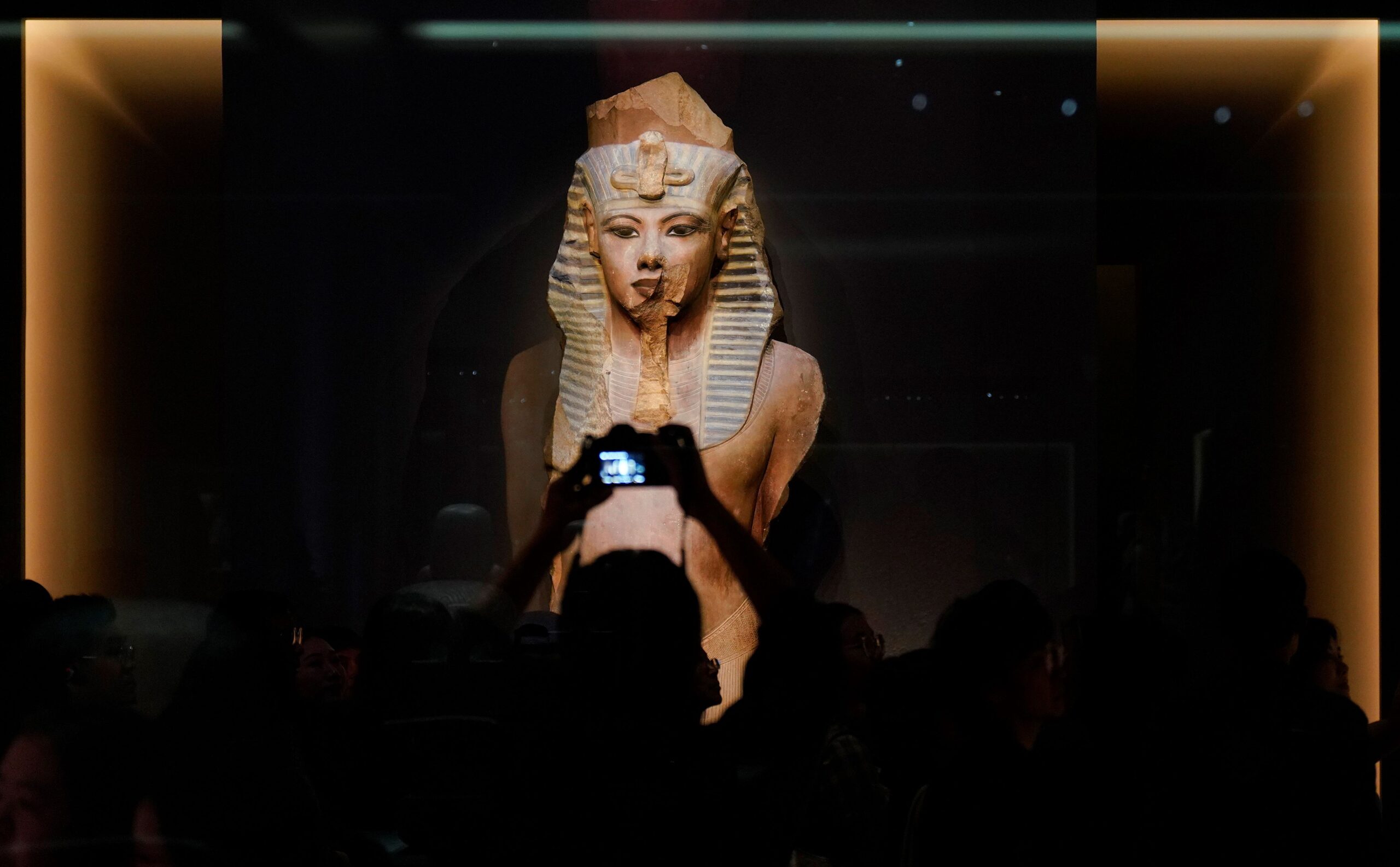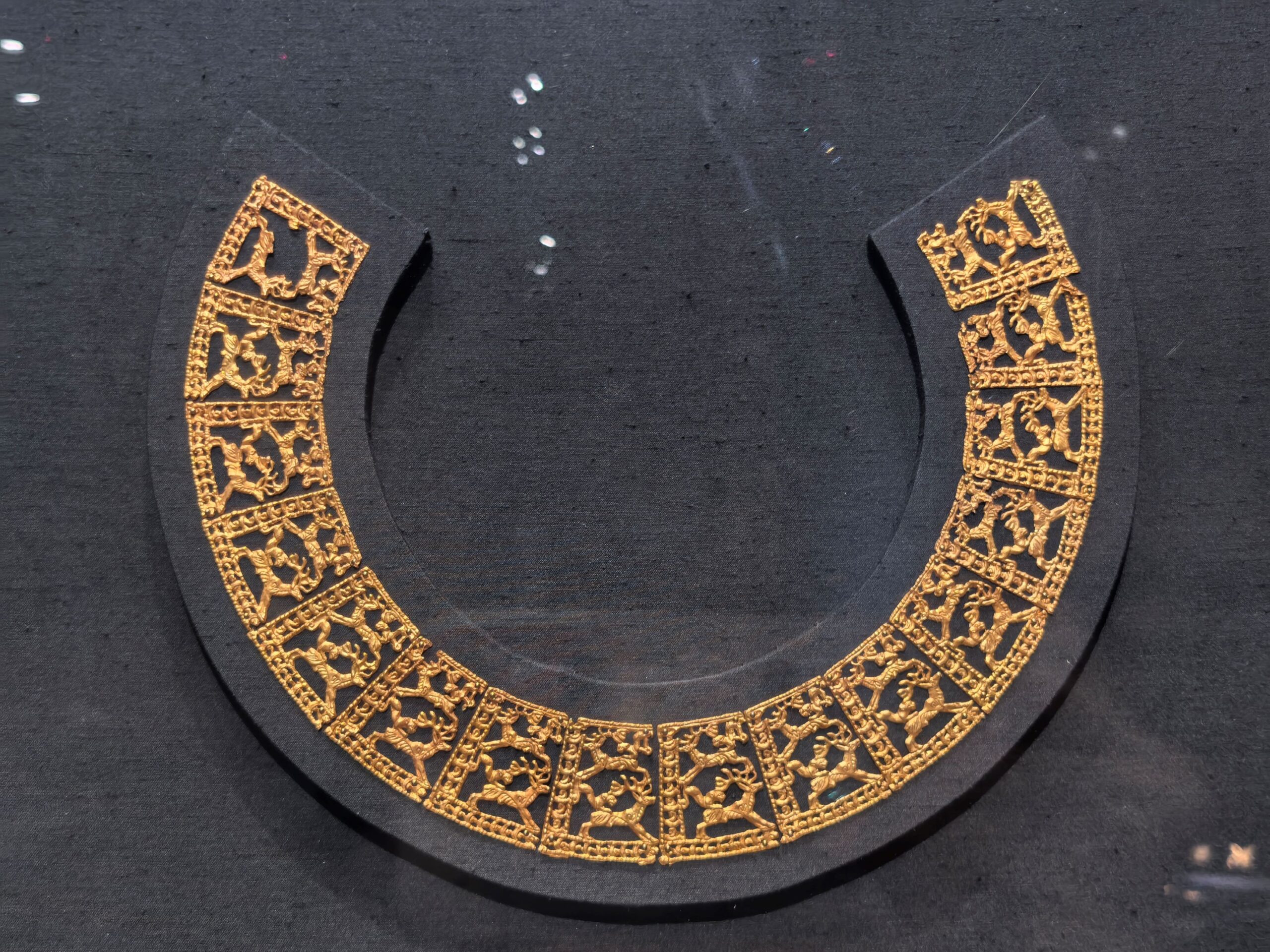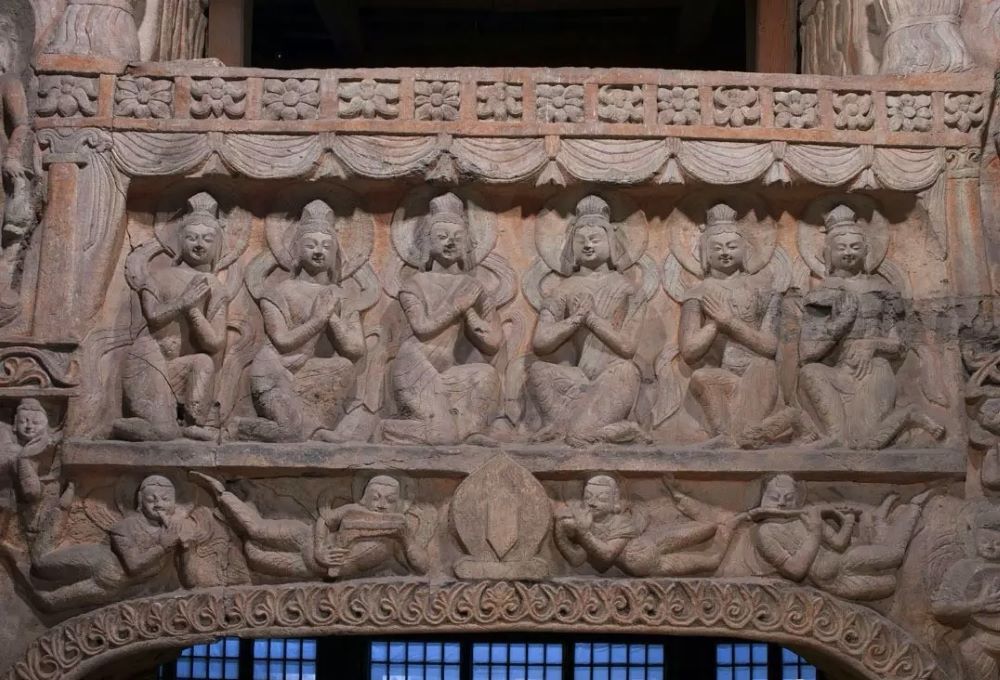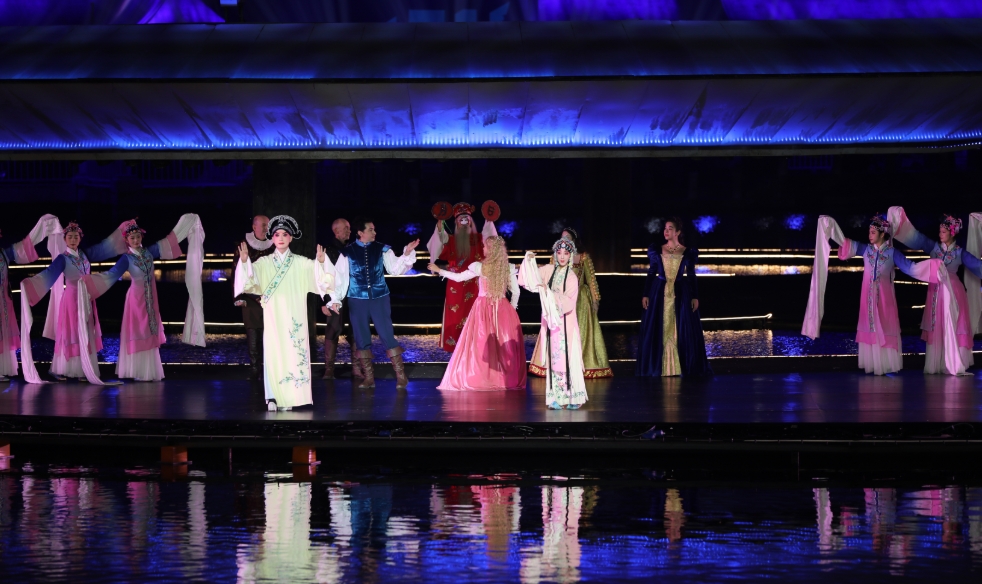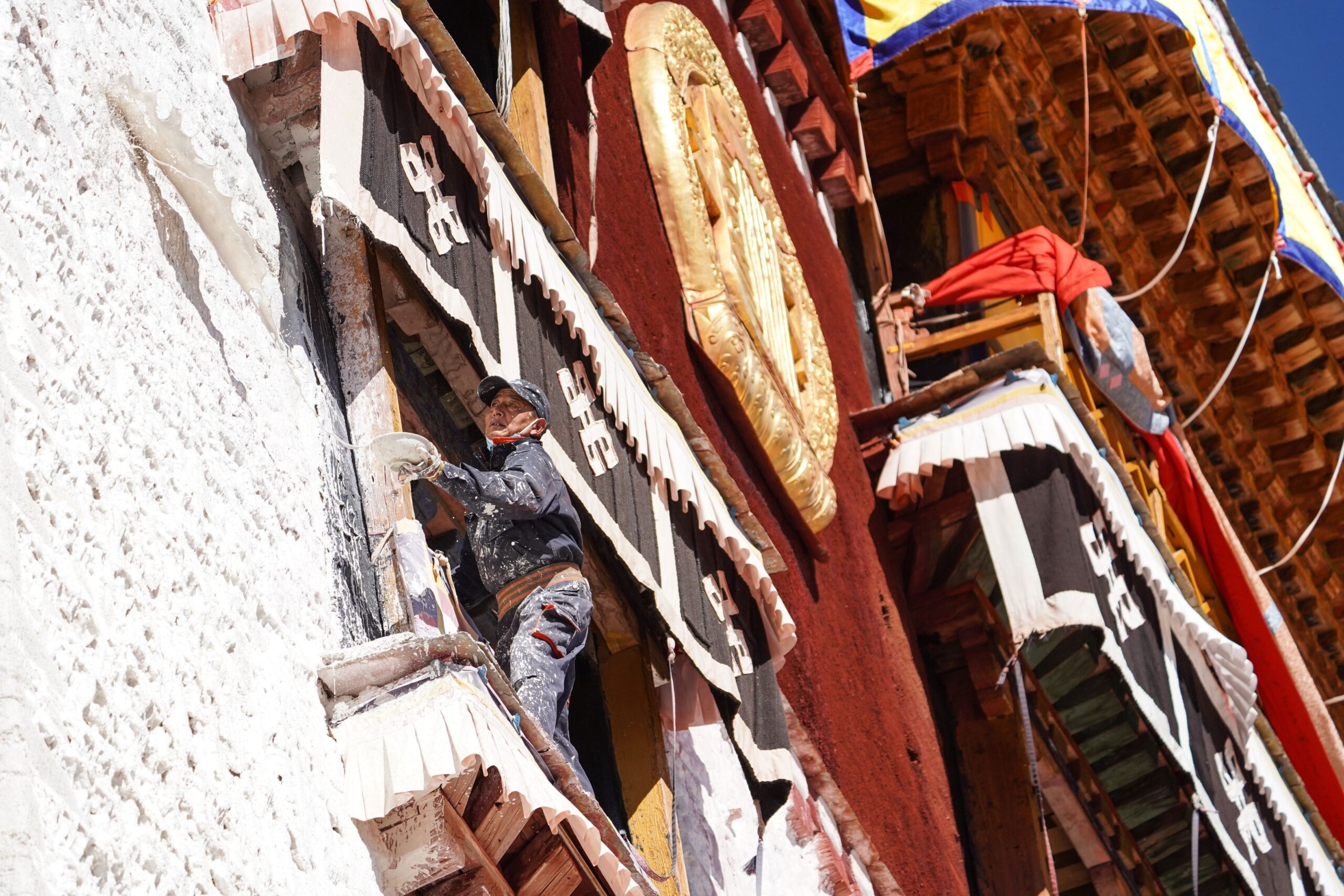If you plan to visit China during the Year of the Snake, you can try to find these places and stories related to snakes.
In the Chinese Zodiac, 2025 is the Year of the Snake. They are very important animals in China, appearing throughout myths and legends. In traditional Chinese culture, they are often referred to as “little dragons”, making them important symbols. For thousands of years, they have been the creator of humanity, a god for people to worship, or creatures that fall in love with a human.
Learn all about where to find these animals around China, and the stories behind them.
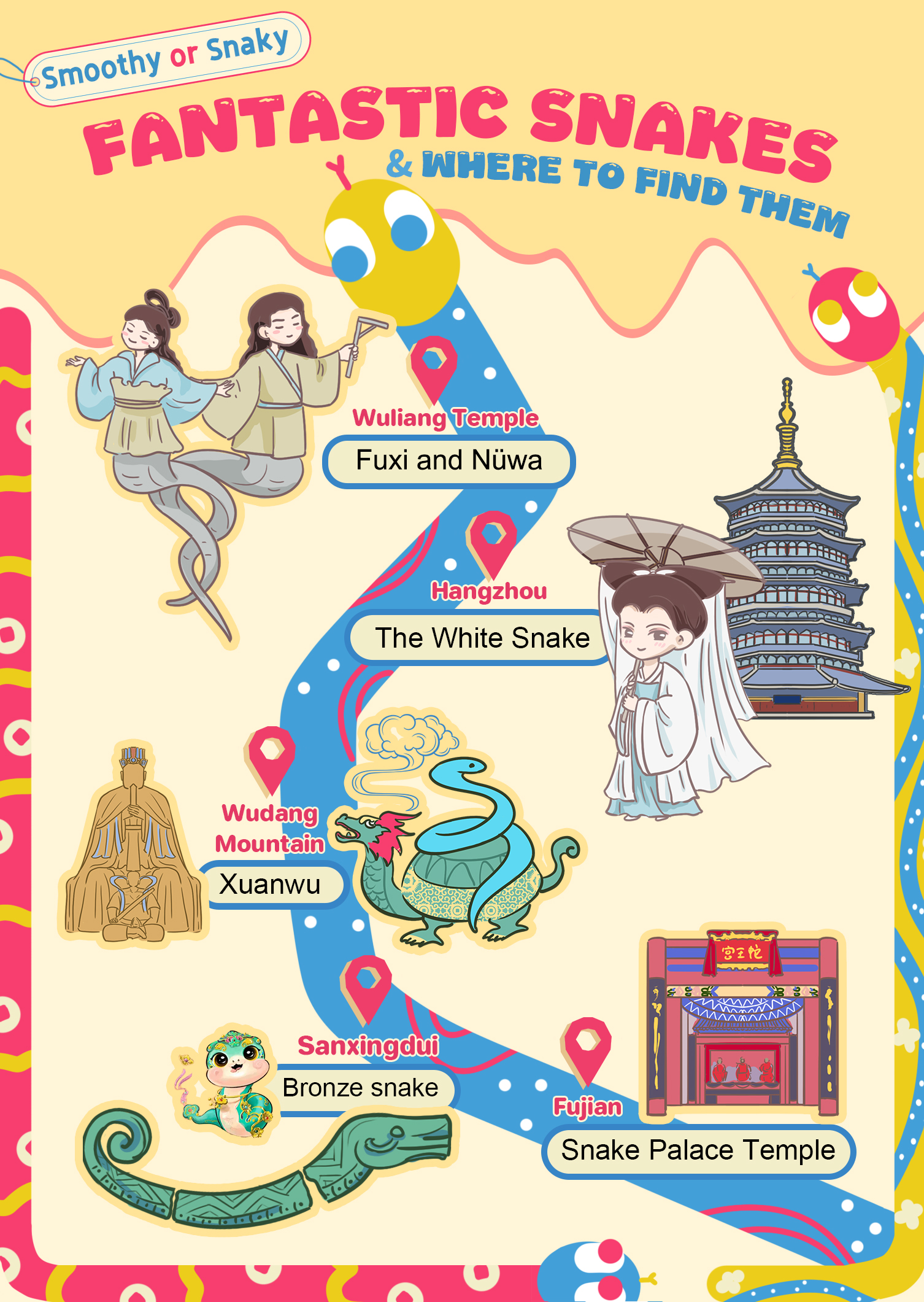
Fuxi and Nüwa
Location: Wuliang Temple, Shandong
Fuxi (伏羲) and Nüwa (女娲) are cultural heroes in Chinese mythology. They are credited with creating humanity and the invention of hunting, fishing, and cooking. Fuxi was counted as the first mythical emperor of China, while Nüwa is the mother goddess, the creator of mankind.
In Chinese tomb murals and iconography, which can be traced back to the Han Dynasty, Fuxi and Nüwa generally have snake-like bodies and human faces or heads. Their tails are usually depicted stretching out towards and intertwined with each other.
The White Snake
Location: Hangzhou, Zhejiang
The White Snake, probably the most famous in China, originated from a novel created in the Ming Dynasty.
The story is centred around a romance between a man named Xu Xuan and a female snake named Bai Suzhen. However, monk called Fa Hai wantonly interfered in their love. In the end, Fa Hai suppressed Bai under the Leifeng Pagoda. For hundreds of years, when people talk about or visit Leifeng Pagoda, Bai Suzhen is thought about.
Xuanwu
Location: Wudang Mountain, Hubei
Xuanwu (玄武) is one of four symbols of the Chinese constellations, usually depicted as a tortoise intertwined with a snake. “玄” means black or dark, while “武” means warrior or martial. As tortoises and snakes are known to hibernate during the winter, the Xuanwu implies the North and the season of winter.
In Taoism, Xuanwu was personalized to the “Xuanwu Great Emperor,” also known as Zhenwu Great Emperor, one of the higher-ranking deities in Taoism. Today, the emperor’s temple is at Wudang Mountain, Hubei Province.
Bronze Snake
Location: Sanxingdui, Sichuan
Seen as the “little dragon” in Chinese culture, snakes are often used as decoration on bronze artefacts. In 2022, archaeologists unearthed a rarely seen bronze-winged snake at the Sanxingdui Ruins site in Sichuan Province.
Scales are scattered on its body, the tail is curled up, and the circle buttons on its neck and abdomen suggest it was originally decoration on another object.
The 2025 Spring Festival Gala official mascot is inspired by this artefact. Called Si Shengsheng (巳升升), the cute snake is full of elements of Chinese culture, such as the lucky symbol Ruyi and Chinese knot.
Snake Palace Temple
Location: Minhou, Fujian
Snake totem worship is one of the symbols of Minnan culture, also called Hokkien culture. In Fujian, people have a lot of snake-related folk customs. For example, there are several Snake Palace Temples in the province, for locals to worship the Snake God. The god is seen to be able to conduct justice and be fair.
Today, in Yanping, Gutian, Youxi, and other cities, people hold snake lantern activities in the first month of the lunar year. These mile-long paper lanterns are a spectacular event during the Spring Festival.
Written by Yetao Gu, poster Design by Di Wang.
If you liked this article why not read: Spring Festival Holiday Sparks New Travel Trends

